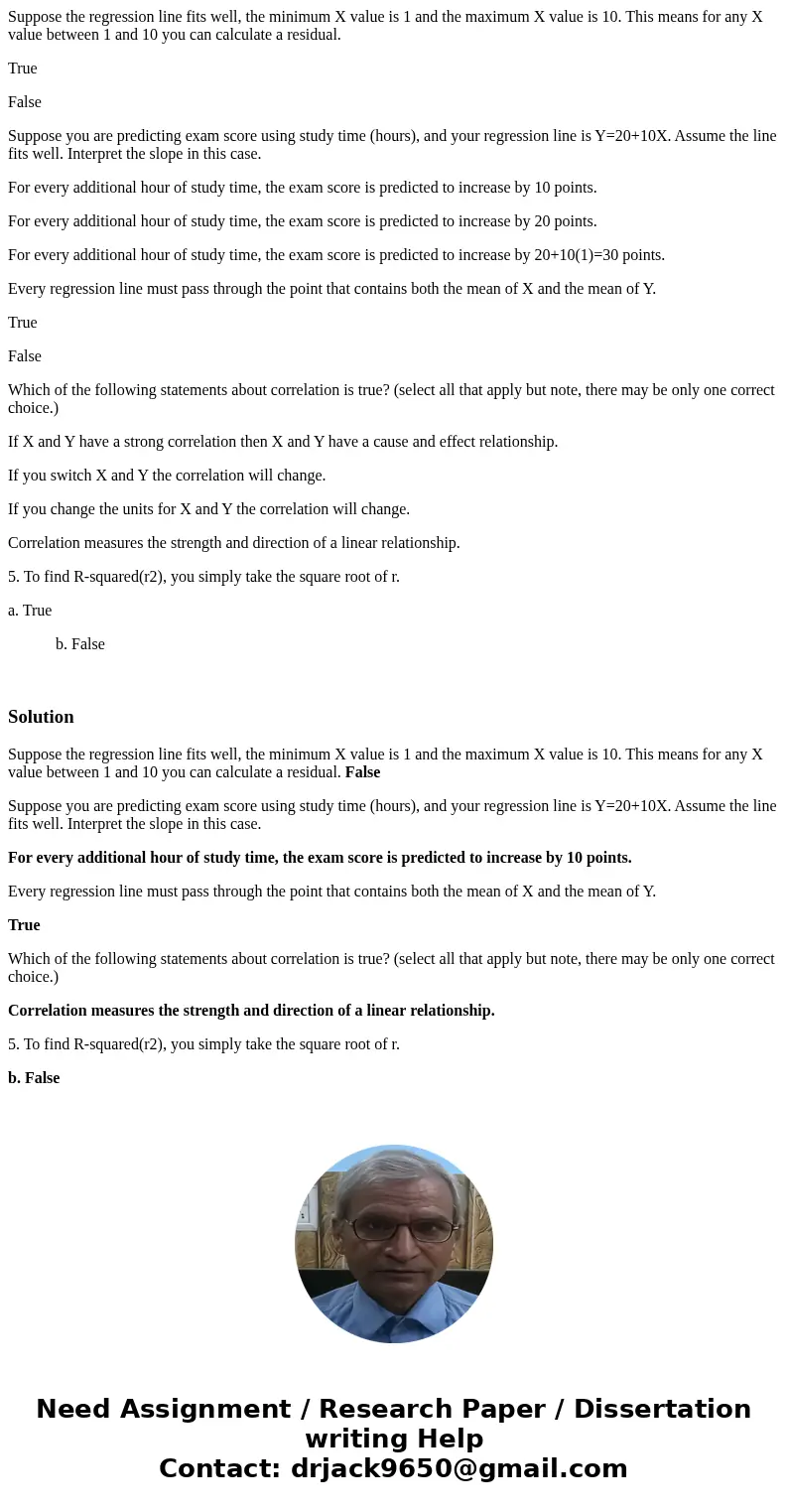Suppose the regression line fits well the minimum X value is
Suppose the regression line fits well, the minimum X value is 1 and the maximum X value is 10. This means for any X value between 1 and 10 you can calculate a residual.
True
False
Suppose you are predicting exam score using study time (hours), and your regression line is Y=20+10X. Assume the line fits well. Interpret the slope in this case.
For every additional hour of study time, the exam score is predicted to increase by 10 points.
For every additional hour of study time, the exam score is predicted to increase by 20 points.
For every additional hour of study time, the exam score is predicted to increase by 20+10(1)=30 points.
Every regression line must pass through the point that contains both the mean of X and the mean of Y.
True
False
Which of the following statements about correlation is true? (select all that apply but note, there may be only one correct choice.)
If X and Y have a strong correlation then X and Y have a cause and effect relationship.
If you switch X and Y the correlation will change.
If you change the units for X and Y the correlation will change.
Correlation measures the strength and direction of a linear relationship.
5. To find R-squared(r2), you simply take the square root of r.
a. True
b. False
Solution
Suppose the regression line fits well, the minimum X value is 1 and the maximum X value is 10. This means for any X value between 1 and 10 you can calculate a residual. False
Suppose you are predicting exam score using study time (hours), and your regression line is Y=20+10X. Assume the line fits well. Interpret the slope in this case.
For every additional hour of study time, the exam score is predicted to increase by 10 points.
Every regression line must pass through the point that contains both the mean of X and the mean of Y.
True
Which of the following statements about correlation is true? (select all that apply but note, there may be only one correct choice.)
Correlation measures the strength and direction of a linear relationship.
5. To find R-squared(r2), you simply take the square root of r.
b. False

 Homework Sourse
Homework Sourse